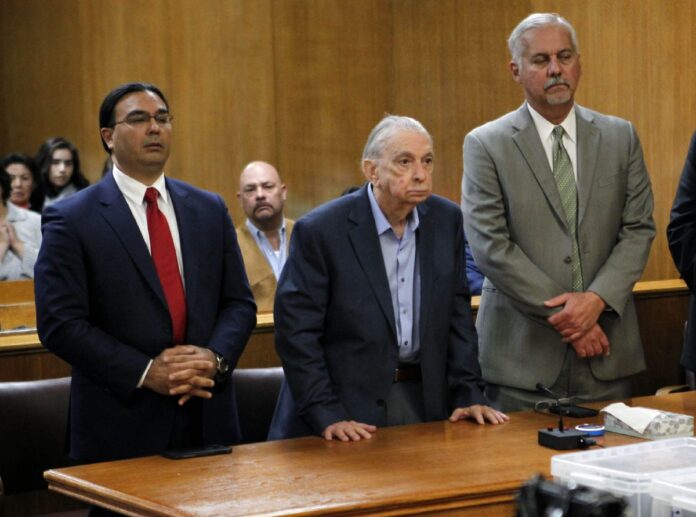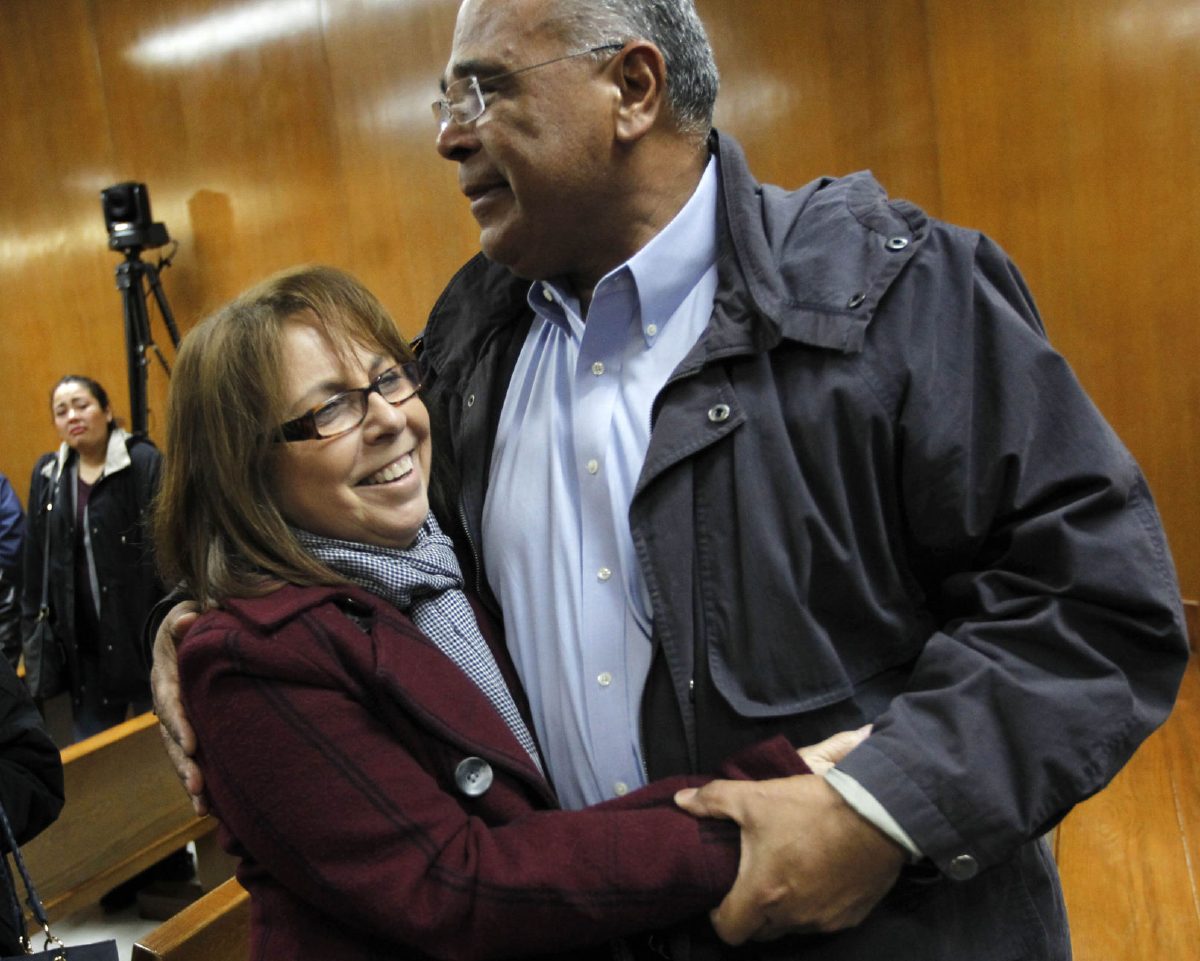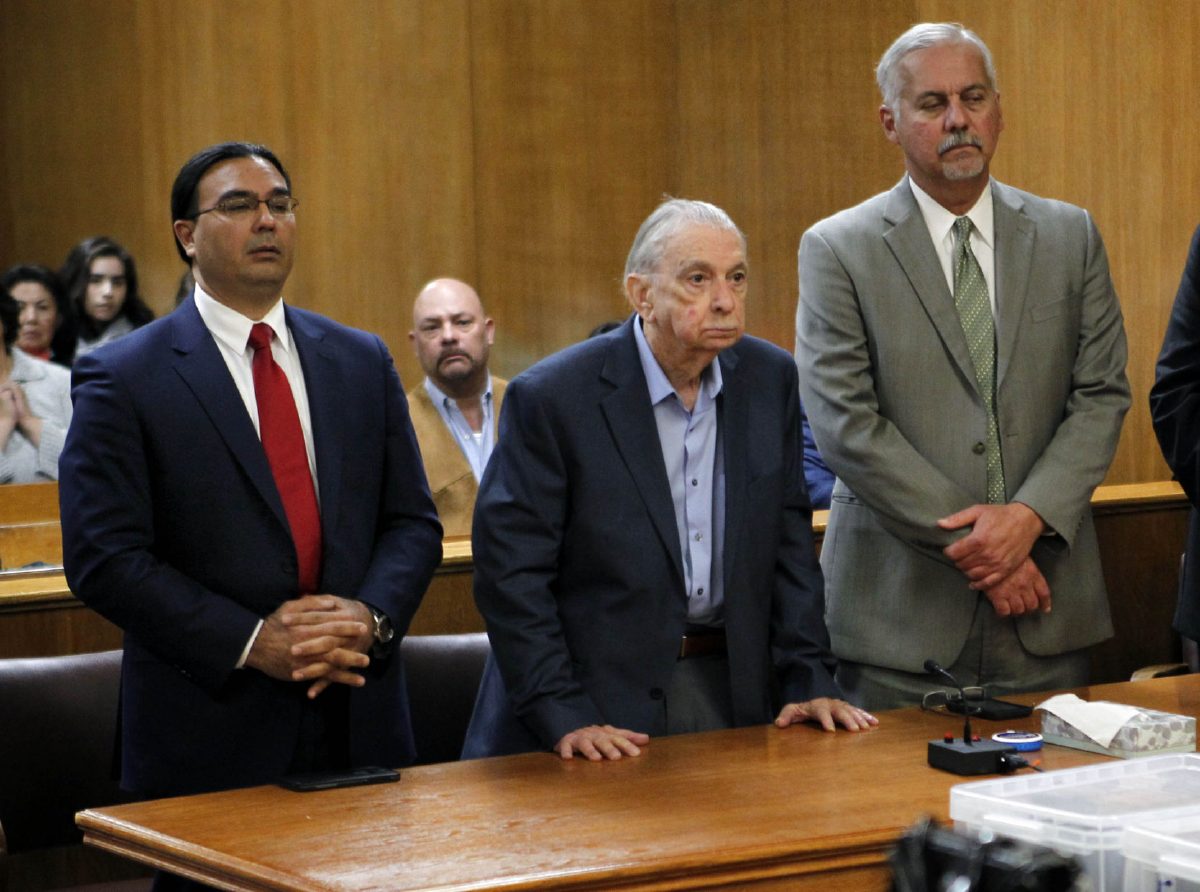
EDINBURG — Six hours of deliberation ended 57 years of speculation Thursday night when a jury found ex-priest John Feit guilty of the April 1960 murder of schoolteacher Irene Garza.
Feit showed no emotion as the verdict was read, appearing almost defiant as he learned of his conviction for murder with malice aforethought, or premeditation. The 85-year-old defendant also didn’t offer anything in the form of remarks while being led out of the courtroom, as defense attorney O. Rene Flores said Feit wouldn’t speak to the media.
In contrast, members of Garza’s family, who were present in the courtroom when the verdict was read, were visibly emotional and embraced each other following news of Feit’s fate, which ends a nearly six-decade wait for justice in the death of the 25-year-old.
Also on hand was McAllen Police Chief Victor Rodriguez, who has worked on the case since 2002 and long believed there was sufficient probable cause to charge Feit with the murder.
Rodriguez was also among the many who testified in a trial chock-full of compelling testimony — this including accounts from women who detailed encounters with Feit in 1960 that included the then-priest asking to take photos of one at a cemetery and warning another that she was “next, honey.”
Former monk Dale Tacheny testified about Feit confessing to killing a woman in South Texas in the 1960s while the two were at a monastery.
Over the course of five days of testimony in a trial expected to last at least twice as long, jurors also learned the circumstances surrounding Garza going to confession at McAllen’s Sacred Heart Catholic Church the evening of April 16, 1960. Prosecutors charged that Feit attacked her in the church rectory that night, describing the defendant as someone with deviant tendencies who was excited by the sound of women’s heels and the sight of them kneeling for prayer.
Reported missing after failing to return home later that evening, Garza’s body was then discovered in a canal five days later. An autopsy report concluded she’d been beaten, raped and asphyxiated, likely by suffocation.
A viewfinder, also referred to as a slide finder, which Feit later claimed ownership of in a note, was found in the canal near the body.
Assistant District Attorney Michael Garza, the lead prosecutor in the case, described Feit during closing arguments Thursday morning as “a wolf in priest’s clothing waiting to attack” who came down to the Rio Grande Valley “to find his prey.” He was a man, the prosecutor said, who “sure did cause a lot of trouble” despite only being in the Valley since June 1959, and a man with the potential to inflict greater damage on the community.
In addition to murdering an elementary school teacher who was adored by family and friends, the prosecution reminded jurors that Feit threatened other women and plead no contest to the aggravated assault of Maria America Guerra in Edinburg’s Sacred Heart Catholic Church. This was an attack that occurred a few weeks before Garza’s disappearance.
In the hours before the verdict was handed down, the ADA told The Monitor he had no regrets, and his passion for the case — and for the woman he represented — was evident from the black and white photograph of her he carried in his dress shirt pocket.
Considered among the country’s oldest cold cases, Garza’s murder has drawn national attention and has been featured on CBS’ “48 Hours.” It’s been widely written about by journalists across Texas.
The case also factored into local politics after former Hidalgo County District Attorney Rene Guerra refused to indict the former priest, calling the case unsolvable unless “you believe pigs can fly.”
Among the campaign promises of current District Attorney Ricardo Rodriguez, who defeated Guerra in 2014, was to bring justice to Garza’s family.
The DA was in the courthouse Thursday evening and told The Monitor he was “happy for the family” and that “justice has been served.”
Among other notable highlights in the trial, it was revealed that the Catholic Church conspired with local law enforcement to prevent a scandal and, in doing so, shielded the then-27-year old priest from being charged with Garza’s murder. The investigation into Feit stopped, and the church subsequently moved him out of the Valley.
Flores argued throughout the trial that physical evidence linking his client to the crime was lacking, and in his closing argument, he pointed out conflicting witness statements placing the victim at Sacred Heart Church at various times the evening of Holy Saturday. This was an attempt to poke holes into what he said was “law enforcement’s theory” of what happened to the young woman.
He argued that the prosecution wanted jurors to consider Feit’s viewfinder as a “smoking gun.” Investigators who worked the case in the 2000s testified that the canal was drained in 1960 to find this piece of evidence, but Flores emphasized that neither police reports nor photos of the investigation at that time document this alleged recovery effort.
What’s more, Flores urged jurors to rely on the facts and evidence at hand, not on the stories witnesses’ told about the night Garza went missing and the days following.
The defense objected to hearsay repeatedly throughout the trial, but state District Judge Luis Singleterry overruled nearly all their objections, leading Flores to continually ask the judge to note, for the record, that the defense “was proceeding under protest.”
The sentencing phase of the trial begins Friday morning as Feit asked that the jury decide his punishment.





